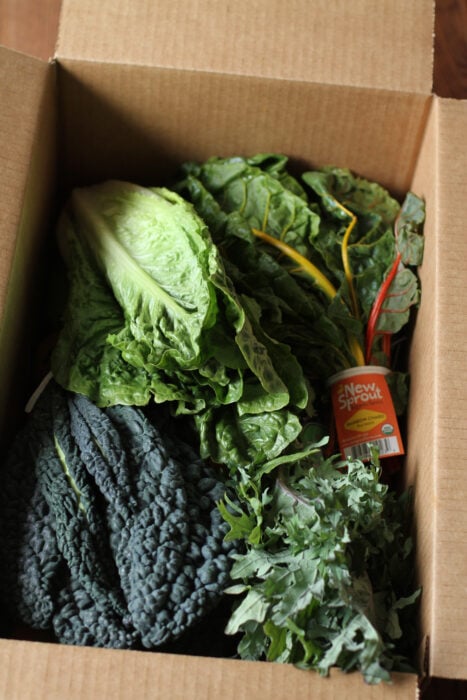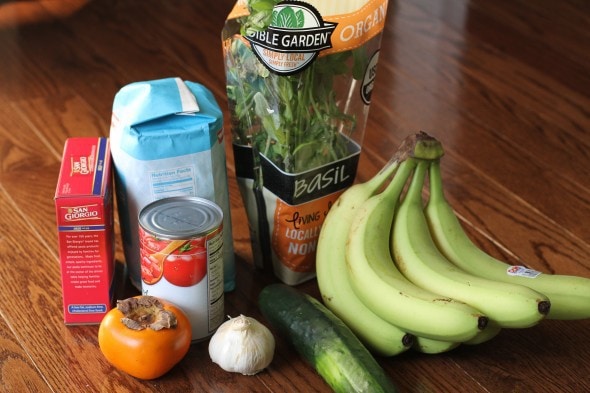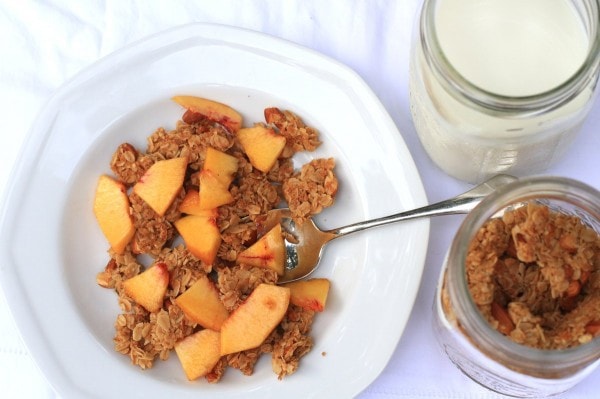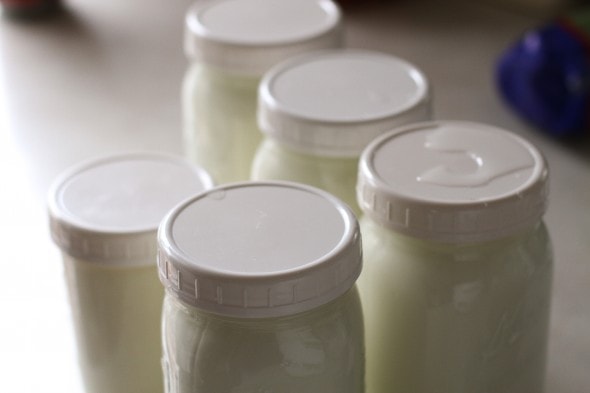If you’ve been paying attention at all while you shop for food, you’ve probably noticed that grocery prices have been going up in the last year or so.

This is not your imagination! Groceries are actually, factually more expensive than they were a year or two ago.
Specifically, in 2020, grocery prices increased 3.5%, which is 75% more than what we usually see.
And that doesn’t seem super likely to change in the very near future.
(Here’s some detailed information from the USDA about rising food prices.)

You can’t really do anything to change the price of groceries (the prices are what the prices are) so you might be feeling a little helpless.
And as I’ve said before, it often helps if I make a list of things I CAN do, rather than focusing on what I can’t do.
So, I thought it would be good to do that here in a blog post, focusing on food prices.
I made a list like this in 2020, so this is part two!
1. Eat at home more
Grocery prices may have gone up, but still, pretty much everything at the grocery store is a screaming bargain compared to anything you buy from a restaurant.
So, if you have been eating out, switch to eating at home for at least some of those meals.
And feel free to buy convenient grocery foods if that’s what you need to do.

A bag of ravioli, a jar of sauce, and a bagged salad are fine.
A refrigerated container of pulled pork + a package of buns is more expensive than the homemade version, but it is bound to be cheaper than the restaurant version.
A rotisserie chicken, a salad kit, and a loaf of bread will be cheaper than almost any takeout.
You seriously can buy almost anything at the grocery store and still save money over restaurant food.
2. Change where you shop
If you’ve been sticking with a store that’s a little more expensive, consider trying a cheaper store.
This would be a great time to finally check out Aldi or Lidl.
(I’m here to tell you that groceries are still ridiculously affordable at Aldi!)

You could join a bulk membership club near you, such as BJs, Costco, or Sam’s Club.
Or you could try Hungry Harvest or Misfits Market.
3. Try some DIY
If you have more money than time, skip this tip.
But if you can find some time to spend on cooking/food prep, add some DIY food into your routine.
A few DIY food ideas:
Homemade granola costs pennies on the dollar compared to store-bought.

Try this no-stir recipe that won’t get oats all over your oven floor!
Homemade yogurt costs less than $1/quart.

Try this homemade yogurt recipe that requires no special equipment.
Homemade pizzas are cheaper than even frozen pizzas. In fact, homemade pizzas cost $1.87.

And here are five reasons your homemade pizzas are not as tasty as you’d like.
4. Look for deals, like gift certificates and cashback
There are some small things you can do to eke a few more dollars out of your grocery budget.
For example:
- If you are a responsible credit card user, make sure to swipe a rewards credit card to do your grocery shopping. Considering signing up for a credit card that offers particularly good rewards for grocery purchases.
- Buy some grocery cards through Gift Card Granny
- Scan your receipts through an app like Ibotta or Fetch Rewards* to get points toward gift certificates
*If you sign up for Fetch, use code QG8V2 for a 4,000 point sign-up bonus.
5. Be a flexible eater
If you have a rigid set of items you want to eat, and you want to eat those items in specific combinations, it’ll be tough to save money on groceries.
But if you are flexible, that can help in a multitude of ways.
For instance, a flexible person can:
- eat what’s on sale
- eat what’s in season
- eat extras given by another household (or extras from food pantry volunteering, like we do)
- eat leftovers
- eat clearance items
- eat odds and ends from the fridge, freezer, or pantry
- eat generic brand foods
- substitute ingredients in recipes to use what they have or what’s cheap
6. Reset your thinking about food prices
According to Monthly Labor Review, households in 1917-1919 spent 41% of their income on food.
And according to the USDA, in 1960, the average American household spend 17% of their disposable income on food.
But in 2019, that average was down to less than 10%.
When you look at it like that, it’s a little harder to feel sorry for ourselves about how expensive food is.
What did I miss? Add some more ideas to my list!
P.S. In case you missed it, here are the original five food inflation tips I published.

Kim from Philadelphia
Sunday 10th of July 2022
I’d say recognize that every meal doesn’t need to be exciting or an original creation. I eat the same, cheap meal quite often for lunch- and I make it in bulk. So easy. 1 pound of dry lentils 1 large can crushed tomatoes 1.5 cans of water (I use the can) (Optional - a sautéed onion and a few chopped carrots, a hot pepper, curry powder, cumin, and turmeric to taste. This makes 4-5 generous servings
Another suggestion is to grow easy things like basil, parsley, other herbs. These aren’t cheap in the store, and you can make pesto out of the basil
Ringo
Saturday 9th of July 2022
I'm vegetarian and have felt much less impact of higher prices, from what I can tell, than meat eaters. I recommend lots of seasonal produce in salads, slaws, soups, curries/stews, and top with a protein like lentils, black beans, garbanzos, seeds or peanuts, or shredded cheese. My current favorite is a cabbage based coleslaw with thinly sliced carrots, celery, and green pepper, dressed with apple cider vinegar, olive oil, a little salt and pepper and celery seed. Current favorite topper is black beans and a sprinkle of chili powder (the spice mix, not straight chilies). Keeps in the fridge for days and refreshing inhot steamy weather!
Liz
Saturday 9th of July 2022
Sam's club is running a special until the end of the month (I think) that makes the membership free. It was $45 to sign up and then you get $45 off your first purchase.
My family switched to eating mostly home made, unprocessed foods and our grocery bill went WAY down. (And so did my waistline!). As long as I stick to buying "ingredients" at Sam's and not convenience foods, the savings will be really good. Coconut oil, raisins, fish, and nuts were all several dollars cheaper per pound and we eat a lot of those!
There's a produce wholesaler near me that sells to the public. The only catch is that you have to have a plan for 18 lbs of grapes, 25 lbs of apples, 30 lbs of beets, etc. They don't sell in just 1 or 2 lb bundles. I'm still trying to think of how I can take advantage of the wholesale prices without wasting. Canning doesn't make sense for us because so many canning recipes require sugar and my husband is diabetic.
Lindsey
Saturday 9th of July 2022
@Liz, Buy with a friend and divide it up.
Becca
Saturday 9th of July 2022
@Liz,
Maybe some things can be frozen?
Becca
Saturday 9th of July 2022
Hey, there! Thanks for the links for all these tips. Every little bit helps with groceries these days!
My method of making yogurt is a lot lazier than yours. I thought I had commented with it on your original yogurt post, but didn't see it when I scrolled through the other day. Anyway, my method uses only one pot (with lid) and one spoon. Here it is in case anyone is daunted by the amount of transferring, dishes, use of thermometer, etc yogurt making seems to entail. If you're lazy like me, you can still make yogurt:
1. Pour some milk into the pot (the amount you use roughly equals the amount of yogurt you will get) and heat it until it's almost boiling. (Sometimes I walk away and it boils over which makes a big mess on the stove, but will still make yogurt, so all is not lost if the milk actually boils. But also don't be like me and end up scrubbing scalded milk off your stove top because that is decidedly not lazy.)
2. Turn off heat and put the lid on. Wait. (Now you can safely walk away!)
3. Come back and check on the temperature of the milk using your hand! Can you put your hand on the outside of the pot? Too hot still? Walk away. Feels just warm and toasty? Check inside by sticking your (cleanish) finger into the milk. Didn't hurt? It's ready for the starter. (You want your milk to be about body temperature. This takes about an hour or so depending on your room temperature.)
4. Stir in some yogurt starter (can use a spoonful or two of store-bought yogurt with live cultures, an ice cube or two of frozen whey from last time, the scrapings from your last batch or even one of those store-bought yogurt culture packets. I've used all of these and they all work as long as what you use contains active cultures.
5. Put the lid back on and shove the pot into the oven (turned off) and leave it there. If it's winter and cold in your house, you can turn the oven on for a minute or two before you put the pot in just to warm it up, but turn it off once the pot is in.
6. Wait about 12 hours. I generally go to bed. Or, you know, waste time online until I fall asleep on the couch.
7. In the morning, check your pot. Does it look like yogurt? Yay! You're done! Shove the whole pot into the fridge. Still looks like milk? Leave it longer. If you've waited 24 hours and it's still not yogurt, you can repeat the process of stirring in starter because it's possible you put it in when the milk was too hot. You do not need to give up on it unless it smells off. Sometimes it just takes longer to "yogurt" especially if it's cold in your house.
8. I usually just keep the pot of yogurt and a ladle in the fridge and dole it out over the week, adding fruit, granola, sugar, etc to individual bowls. I tend to stir the whey (yellow liquid) back in, but you can also strain it out if you want thicker yogurt.
Lindsey
Saturday 9th of July 2022
We adulterate some of our foods. For tacos or other loose burger recipes I add some shredded zucchini, as I grow a lot of it and shred and freeze it so it is available to us almost all winter. (For those who wonder if a garden is worth it, one container with one zucchini plant will give you way, way more vegetable than you would pay for one zucchini in the store.)
Rhubarb is one of the few edible perennials that thrive in northern Alaska. We hve two plants and they supply an abundance of rhubarb. Neither of us likes it in pie form because it takes too much sugar but I cook it up and add it to the applesauce I make each year when apples cost the least in the grocery store every fall. It stretches the apple sauce so saves us money.
The milk we buy is full fat but I pull off about a quart from a gallon and replace it with water, stretching a gallon. Although, lately we have been drinking it with a few cubes of ice in the glass, which does the same thing because we use less while drinking it watered down this way. I tried the trick of replacing some of the milk with powdered milk but the husband could taste it but is fine with having it watered down. He says it tastes like 2% to him.